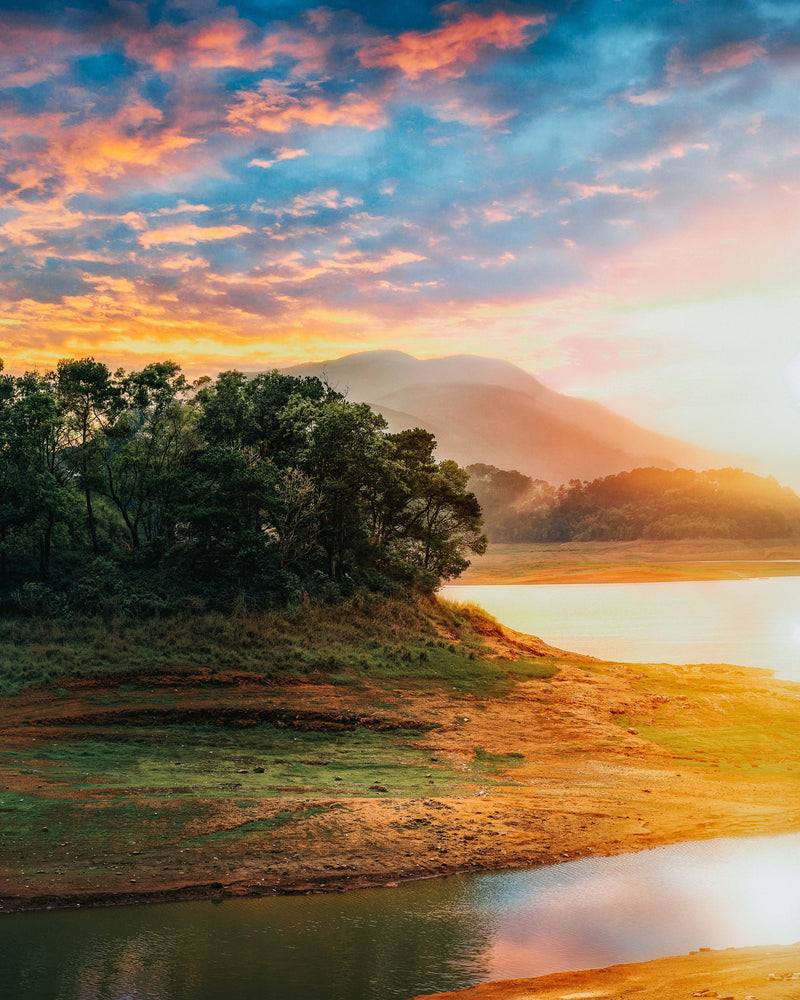Meghalaya, North East India

We, as humans, are psychologically trapped with the desire to have power over others or over our circumstances. This trap of power is a disguise of what one truly seeks, freedom. That is also the reason why some suffer from the feeling that “the grass is greener on the other side of the fence.” We are forever in search of freedom from our current circumstances and choose not to live in the moment. What it all boils down to are misplaced desires.
Autonomy appeals to all and can be achieved by looking inwards and having self-control. However, some assume that this state of independence can be achieved by controlling others. This pattern of having a lack of control over our own-selves unfortunately manifests in us trying to gain power or control of people, things, or circumstances that are all beyond us. Autonomy is a basic psychological need as per the self-determination theory. Once this need is satisfied, it makes an individual feel more intrinsically motivated and thus true to themselves, leading to their well-being and development.
This is not just applicable individually but also collectively. A nation, just like human relationships, strives to have power over another nation, giving them the ability to influence and exploit the nation in totality.
Looking at the definition of colonialism, we see it is, “Control by one power over a dependent area or people.” Colonialism in this world of ours has been prevalent since 1550 BC, when ancient Greece, Rome, Egypt, and Phoenicia all tried to expand their borders and increase their power by using resources from the places they conquered.
During the Age of Discovery in the 15th century, Portugal and Spain competed for new territories, and England, the Netherlands, France, and Germany joined them and even fought them by expanding their empires.
While the Age of Discovery was more like the Age of expanding empires, along with many other countries, India in the 17th century was also colonized. The Voyage of Vasco da Gama came to India first, and in this way, the Portuguese came first to India and brought Christianity to India.
In 1498 CE, the Portuguese arrived in India, the Dutch in 1605 CE, the British in 1612 CE, and then the French in 1667 CE. All held trading posts and traded from India.
The British Raj surpassed all the others eventually, as after the Indian rebellion in 1857, the British East India Company was examined by the British Empire and the company was dissolved. The crown thereafter took direct control of India.
The northeastern states, established during the British Raj of the 19th and early 20th centuries, became relatively isolated from traditional trading partners such as Bhutan and Myanmar. Many of the people in present-day Mizoram, Meghalaya, and Nagaland converted to Christianity under the influence of British (Welsh) missionaries.
During World War II, after the Japanese attacked the US naval base at Pearl Harbor, they also began invading European colonies in East Asia. They planned an attack on British India. Traveling through Burma, its forces were stopped at Kohima and Imphal by British and Indian troops, and the Japanese were driven back into Burma. This led to heavy losses for Japan in the Battle of Imphal in 1944.
The North East Region of India is a delightful land full of myths and legends, coupled with mesmerizing beauty. A damsel draped with beauty, unaware of what she is like. Holding hands with India’s neighbors Bangladesh, Bhutan, Nepal, and China through its borders.
There are 8 north-eastern states of India; 7 sister states and 1 brother state. Namely, Assam, Meghalaya, Tripura, Manipur, Nagaland, Mizoram, and Arunachal Pradesh are the sister states, and Sikkim is the brother state. Their stories of origin, independence, unity and division are examples of what power can do; it can either unite or divide for its own gain.
Historically, Meghalaya was incorporated into Assam by the British administration ,and later, the North Eastern Areas (Reorganization) Act, 1971, made Meghalaya an autonomous state.
A lush green beauty covered by a veil of clouds, aptly named Meghalaya, meaning cloud abode. Meghalaya has ties to Neolithic age, with remains from that age being found hidden in its bosom. Like the Indus Valley Civilization’s archeological sites in north of India you can now find archeological Neolithic sites that reflect the Neolithic period at Khasi Hills in Meghalaya.
Meghalaya’s best places for tourists to visit
Shillong, picturesque town with natural beauty and pleasant weather in all seasons.
Cherrapunjee aka Sohra, Cherrapunjee, adventurous activities and rain galore are wrapped in scenic attractions.
Baghmara, majestic hills, lakes, rivers, bird sanctuary, flora and fauna in the south of the Garo hills.
Jowai, history, lake, monoliths, caves, waterfalls, beautiful sights, heritage and culture.
Dawki Town, wildlife, waterfalls, a small village known for the India and Bangladesh friendship gate, its crystal clear river water, and natural beauty.
Tura, large town based in the foothills, natural and abundant with waterfalls, mountain peaks, and national parks.
Williamnagar, on the banks of the upper Simang river, encloses unique and enchanting views.
Mawlynnong Village, cleanest village in Asia with fruit orchards, bridges, waterfalls, a church of Epiphany, water falls, and fresh air.
Nongkhnum Island, to the west of the Khasi hills, is the second biggest river island in Asia. One can go boating, camping, fishing, or just basking in the sun by the ocean.
During the British rule of India, the British imperial authorities nicknamed Shillong, the "Scotland of the East.” True power resides in nature, and sometimes it’s found hidden. The lush green lands of Meghalaya can be seen when one goes hiking through the Laitlum Canyon in Shillong. When one visits the limestone caves, one can see calcium ponds, stalactite and stalagmite formations. Stone monoliths can be seen in Nartiang village.
Some other places to see in Meghalaya are Nongriat Root Bridges, Don Bosco Museum of Indigenous Cultures, Khasi Hills Archery Sports Institute, Nohkalikai Falls, Balpakram National Park, Mawsmai Cave, Ramakrishna Mission, Nokrek National Park, Wankhar Entomology Museum, Ward’s Lake, Shillong Golf Course, Pinewood Hotel, Presbyterian Church, All Saints’ Cathedral.
The beauty of this state is also due to the fact that it harbors diversity and ropes them in as part of its beauty.
The must-have foods in Meghalaya are Jadoh, Doh-Khlieh, Nakham Bitchi, Pumaloi, Pudoh, Minil Songa, Sakin Gata, Kyat, Dohneiiong, and Tungrymbai.
English is the official language spoken in Meghalaya, with Khasi, Pnar, and Gnar being the predominant languages. Attires are different from place to place in this region, showing what marking and holding on to a true identity for ages can mean. Unlike many Indian states and many countries in the world, Meghalaya has historically followed a matrilineal system where the lineage as well as inheritance are traced on the woman’s side. The youngest girl child inherits everything and she must also take care of the parents.
Some of the famous women writers from Meghalaya are Inderjit Kaur, Arundhati Roy, Helen Giri Syiem, Daisy Hasan, Anjum Hasan, Mufti Nurunnessa Khatun, Patricia Mukhim, Janice Pariat, and Queenie Rynjah. Some other novelists from Meghalaya are Dhrubajyoti Bora, Siddhartha Deb, and Dhruba Hazarika.
If you can’t travel and if you can’t get to meet the locals, you would think you wouldn’t ever see what I wrote here, but I have a bit more for you. See the award-winning movie Oaataah: of the Earth by Pradip Kurbah to know how a woman moves to a life beyond her heart-wrenching circumstances and finds peace in the backdrop of tribal life. The movie is available on Netflix India, and if you are viewing from another country than India, then you can use a VPN to have access to shows and movies available to all regions globally.
Meghalaya is a must-see state in India where the luscious greenery peeking through passing clouds tells us how life is like a cloud, simply in constant movement from one moment to another, and how the moments of greenery peeking through the clouds are just the perfect moments that we strive for.

